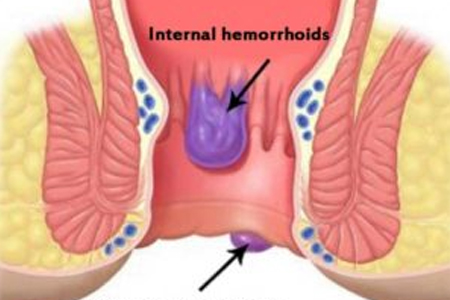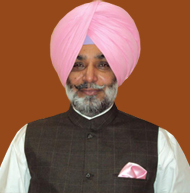
HAEMORRHOIDS ( ARSHA)
- July 30, 2018
- Posted by Vaidya Jagjit Singh
- 0 Comment(s)
A haemorrhoid is a very common inflammatory ano-rectal disease. Haemorrhoids arise due to congestion of internal or external venous plexuses around the anal canal. It is pitta pradhan tridoshaj vyadhi. Ano-rectal diseases are very common in adults and the people who have sitting jobs.
For example, in summer season person is consuming hot, salty, sour, sharp and spicy foodstuffs and following the lifestyle like exposing in sunlight and person is of Pitta prakruti then that person is prone to develop the disease Sometimes piles can be present by birth.
Table of Contents
CAUSES
- Diet (Aahar karana) – spicy, sour, salty, hot, pungent food stuffs
- Lifestyle (Vihara karana)- sedentary lifestyle, no physical exertion, exposure to sharp sunrays etc.
- Mental exertion (Mansik karana) – anger, grief etc.
- Hereditary diseases – it is quite clear that piles come under the category of hereditary ones and it will run in generations to generations.
- Pregnancy- Progesterone hormone is a vasodilator. As progesterone level is high in pregnancy, does dilatation of anal vessels.
- Occupational hazards – Individuals who are indulges in sitting jobs are prone for piles. Due to continuous pressure over anal region.
- Constipation and diarrhea.
PATHOGENESIS
SYMPTOMS
- ‘Splash on pan’ is the cardinal sign of piles. Rectal bleeding occurs after defecation.
- Constipation – while passing hard stools, there will be tears on mucous layer.
- Pain- there will be cutting type of pain.
- Associated with burning sensation.
- Protruded mass.
- Mucous discharge will be seen during defecation.
- Redness around the anal canal.
- Itching around anus.
- There will be swelling.
- Person is anemic, due to gradual blood loss person feels fatigue and weak.
TYPES
- A) There are 2 types of haemorrhoids depends on anatomical site-
- Internal haemorrhoids.
- External haemorrhoids.
Internal haemorrhoids originate above the dentate line or pectinate line. And mostly associate with bleeding.
External piles which are present below the dentate line, usually it is painful and visible.
- B) depends on nature –
- Bleeding piles
- Non bleeding piles
- C) Depends on degree of Prolapsed
- 1st degree prolapsed – There will be a button like protrusion on anal canal.
- Second degree prolapsed – mass will protrude out during defecation n goes inside automatically.
- Third degree prolapsed – mass will protrude out during defecation and we have to insert manually.
- Fourth degree prolapsed – mass will remains hang down outside.
MANAGEMENT
As per Ayurveda, management includes-
- Pain management is the prime one.
- Reducing inflammation of vessels.
- Correction of Hemoglobin level in our body.
- Management to avoid Constipation.
TREATMENT
The line of treatment includes –
1.Nidana parivarjan – First and the foremost thing is to cure any disease is obstinate the cause for production of disease.
- Shodhana Therapy – As it is pitta pradhana tridoshaja vyadhi it is better to advice virechana
Avgaha – person is advice to sit in a tub filled with medicated decoctions and has to contract and relax the anal sphincter.
- Shaman Therapy (internal medications) –
Arshokill sachets– Our “Chandigarh Ayurveda centre” has formulated excellent sachets with the combination of herbs like praval, giloy, haritaki, chitrak etc. which is very beneficial in treating piles, and associated problems. Very good results have been reported with this medicine.
Arsha kuthar Rasa – it is used in treatment of haemorrhoids. Strengthens veins and also helps in reduction of mass and swelling. Balance vata and kapha. 1-2 tablets should be taken, twice a day.
Pranda Gutika – it is a very effective medication for bleeding and non-bleeding haemorrhoids. Also improves digestion. 1- 2 tablets should be taken, twice a day.
Arshofit capsules – 2 capsules twice daily.
Panchsakar churan – this powder is very effective to evacuate out waste toxins from the body, and also it helps to relieve constipation. Take half to 1 tsp of powder with lukewarm water, at bed time.
Agni tundi vati – strengthens weak digestive power. 1-2 tablets should be taken before meal.
Triphala syrup or churan-it’s a laxative so helps to relieve constipation.
Trivrut avleha – a laxative.
Hingwadi and Chitrakadi vati.- treats mandagni.
Sheet dhara – as it is an appetizer, treats agnimandya. Increases digestive power along with that it helps in ease digestion. Add half to 1 tsp in 80 ml of water, it should be taken before meal, twice a day.
- Kshaar sutra– it is a specialized ayurvedic procedure. A thread (kshaar sutra) is legated around the pile mass, which will slowly cut down the mass and also heals wound side by side.
- Shalya chikitsa (Surgical procedure) – if the hemorrhoids are prolapsed one, then there is need to go for haemorrhoidectomy.
HOME REMEDIES –
- Sitz baths (avgaha) – Add tablespoon of triphala powder in 3 liters of water, boil it. Cools it down till it remains lukewarm. Person is advice to sit in a tub filled with this decoction and has to contract and relax the anal sphincter. This helps to reduce swelling, itching and mass.
- Add cow ghee in diet which helps to calm down pitta and acts as stool softener.
- Drink Buttermilk by adding pinch of saindhav lavan. It is very beneficial if consumes daily. It increases agni (digestive fire) ,cleanses the channels.
- To avoid constipation add fibrous rich diet in daily routine.
- Take fruit juices like radish, watermelon, pomegranate etc.
- A teaspoon of Haritaki powder along with jaggery is administered at night.
- Soak few raisins at night and consume it in morning.
- Add Yoga and exercises in daily regimen.
PRECAUTION –
- Avoid prolonged sitting. Posture is a triggering factor.
- Should follow exercises and yoga in daily routines.
- Diet- consume soorana kanda (Elephants foot), takra (buttermilk), Yava(Barley), Godhuma(wheat),saindhav lavan, Ajadugda(Goat milk), Goghrita (cow’s ghee), Godugdha (cow’s milk), vegetable soups, juices, banana etc.
Avoid – Excessive spicy, salty, fried and oily foodstuffs.
.

Vaidya Jagjit Singh is a 3rd generation Ayurved physician from his family and is the remarkable person responsible for setting up of the Chandigarh Ayurved and Panchkarma Centre in sector 32 and 22, Chandigarh and Zirakpur and he is also the first founder member of Guru Ravidas Ayurved University. He has done his B.A.M.S. from Shri Dhanwantri Ayurvedic College, Chandigarh. He is an admirable ayurvedic physician with specialization in Chronic ailments.




